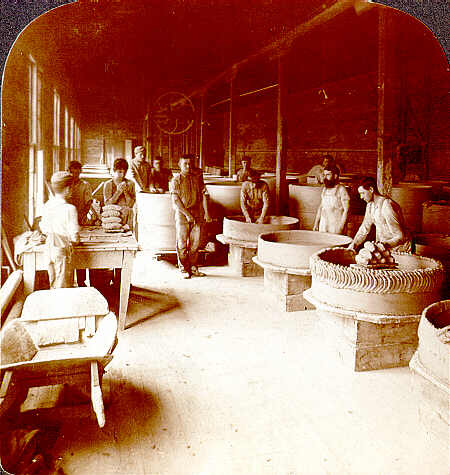Your Guide to the
Alle-Kiski Valley
and the Greater
Pittsburgh Area
Thursday
July 31, 2025
Home
Go Outside
History
Diversion
Back Issues
|
History - Industry - PPG Tarentum
|
Modeling Clay Pots
for Molten Glass

In spite of the low prices, profits in glass manufacture are now greater than ever before.
The workmen themselves, by improved methods of manufacture, have doubled their output,
and hence are receiving better wages. Pennsylvania stands at the head of the glass
working states. She is first in plate and window glass, table and fine blown ware,
and second in fruit jars and bottles. This commonwealth produces three times as much
glass as any other state. In some of the Pennsylvania glass mills may be seen furnaces
capable of holding one thousand ton of molten glass, and of making four hundred and
fifty boxes of window glass in twelve hours. These mills produce fifty per cent of
all the glass made in the United States.
Here we see the first process of glass making. These clay pots are molded by hand,
as we see these men doing, and then pulled to the drying room on a flat truck. We
see one of the trucks, pulled by one man and pushed by several, rolling toward us
down the room. After these pots are thoroughly dry the ingredients of the glass
are mixed in them and they are placed in the furnace. The ingredients consist,
generally, of quartz sand, sulphate of lime and sulphate or carbonate of soda,
mixed in the proper proportions. Glass finished, as distinguished from the
ingredients, is a silicate mixture, fluid at a high temperature.
Next - Drawing a Pot of Liquid Glass from the Furnace
Previous - Map Showing Pittsburgh Plate Glass, Tarentum, 1902
Return - PPG Tarentum
|
|